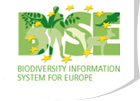Europe's forest sector
European forests and the forest sector have the opportunity to take a leading role in the sustainable development of a circular bioeconomy. The forest-based bioeconomy provides millions of jobs and relies on wood and non-wood materials for sustainably sourced bio-based products and renewable energy. At the same time, it maintains livelihoods and a plethora of regulating and cultural ecosystem services, ultimately contributing to climate change mitigation and a sustainable future.
EU27: Employment in the forest-based downstream bioeconomy sector in 2015, 1000 people
Forest-based bioeconomy provides employment to 4.6 million people in the EU27 in 2015
EU27: Fellings and net annual increment in 2015
Fellings of wood represent 75% of the net annual increment in the EU27.
Key facts on non-wood forest products (NWFP) in 2015
Forests provide many regulating and cultural ecosystem services and non-wood forest products (NWFP)
European forests and the forest sector have the opportunity to take a leading role in the sustainable development of a circular bioeconomy
The forest-based bioeconomy provides millions of jobs and relies on wood and non-wood materials as basis for sustainably sourced bio-based products and renewable energy, while maintaining livelihoods and a plethora of regulating and cultural ecosystem services, ultimately contributing to climate change mitigation and a sustainable future.
Bioeconomy definition
The bioeconomy generally refers to the production and use of biological resources to provide products, processes and services in all economic sectors within the frame of a sustainable economic system. However, there are many other international and national definitions.
The European Commission definition of bioeconomy
"All sectors and systems that rely on biological resources (i.e., animals, plants, micro-organisms and derived biomass, including organic waste), their functions and principles. It includes and interlinks land and marine ecosystems and the services they provide; all primary production sectors that use and produce biological resources, i.e. agriculture, forestry, fisheries and aquaculture; and all economic and industrial sectors that use biological resources and processes to produce food, feed, bio-based products, energy and services."
A forest-based bioeconomy can contribute to climate change mitigation by using sustainably sourced, innovative, and bio-based products that store carbon from the atmosphere and substitute non-renewable materials and energy. Examples are construction materials, chemicals, plastics, textiles, insulation materials, and packaging. Forests are also crucial for biodiversity and provide many other regulating and cultural ecosystem services, including many NWFP.
Sources:Communiqué Global Bioeconomy Summit 2015 published by International Advisory Council of the Global Bioeconomy Summit 2015Extracted from State of Europe’s Forests 2020 Report - Forest Europe published by Ministerial Conference on the Protection of Forests in EuropeEuropean Commission (2018). A sustainable Bioeconomy for Europe: Strengthening the connection between economy, society and the environment










